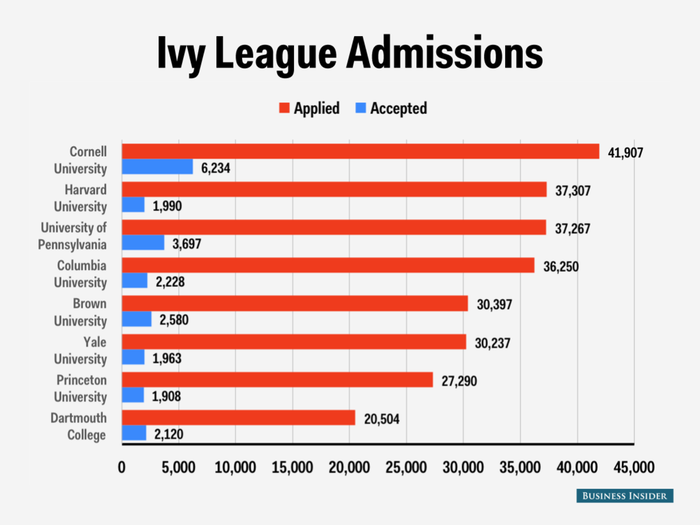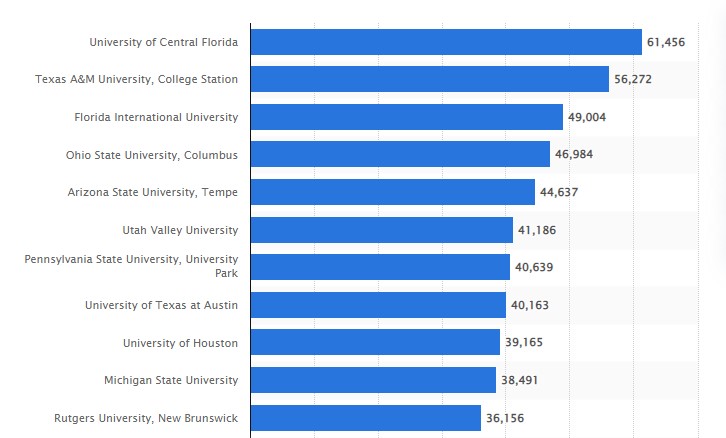Epistemic status: a very rough idea, that I have given relatively little thought to. I am not familiar with the details of how CEA and other organizations prioritize and allocate the support given to universities, so I might be missing very important details. I've only spent about 30 minutes putting together this post, so I might have some errors in here. View this as a rough draft of an idea.
The perception that I have, and what I think is a common perception in EA, is that funding and other support for student EA groups at the university level are mainly going toward "elite" universities: universities that are highly ranked by U.S. News & World Report, which have low admissions rates, and which have high test scores.
These undergraduate colleges[1] generally have only a few thousand students. Eight different EA student organizations at eight different ivy league institutions would be able to reach about 63,000 students[2], or about 8,000 students per organization.

Conversely, if we have eight student organizations at eight well-ranked (top 50) universities in the US with the highest undergraduate student populations, then those eight different EA student organizations would be able to reach about 287,000 students[3], or about 35,000 students per organization. The specific numbers will change depending on which universities are included, but the general idea is simply that maybe we should broaden the focus a bit and get more people, which means more skills. It seems like, despite the talent at ivy league institutions, we might actually end up getting more bang for our buck at less selective universities with higher student populations.

I don't want to imply that we should shift all resources away from Ivy League schools and toward more populous schools, but I do think it might be worth considering adjusting the strategy a little bit. If resources are distributed 80% to ivy league and 20% to other currently, then maybe we should shift it to 60% ivy league and 40% to other. At the least I'd propose finding a couple of populous universities and doing a trial run: create students groups and observe progress for a couple of years.[4]
My rough guess is that the average Harvard student is able to score better on standardized tests and is more well-connected to powerful people than the average Ohio State University student, but I'd also guess that there are more smart enough to make an impact in EA students[5] who are interested in making the world a better place within Ohio State University's 46,000 students than there are within Harvard's 5,000 students.
- ^
In reality most of these famous undergraduate colleges are a single college within a multi-college universities (such as Harvard College, which is only one of the 14 institutions that make up Harvard University), so if we include all the students at the various schools within the university that will affect the numbers. I'm just looking at undergraduate population here, because that is my understanding of where the focus is for EA student groups. However, I might be wrong about this.
- ^
These numbers come from https://www.collegeevaluator.com/ncaa-conferences/ivy-league/enrollment/, and I view then as roughly accurate rather than precisely accurate.
- ^
I got this number by looking at only at universities that are within the top 50 of the US News and World Report, and then summing up the undergraduate populations of the eight most populous: Ohio State University, University of Texas at Austin, University of Florida, Purdue University, University of Illinois at Urbana–Champaign, University of Wisconsin–Madison, University of California-San Diego, The University of California-Los Angeles.
- ^
Hong Kong University has about 16,000 undergraduates, and the EA group there seems to be doing pretty well by the metric of funneling undergrads into impactful careers that they otherwise would have done.
- ^
Admittedly, this is a fuzzy metric.

As someone who's been to a <5% acceptance rate school and a school that no one outside my city knows exists, I agree with this assessment.
To ground this discussion, I'll be using stats from the 2020 EA demographics survey.
Specifically, this chart of EA's alma maters.
As you can see, that's a huge overrepresentation from elite universities. Over 1/3 of respondents come from Oxbridge or T20 universities. The top-heaviness is even wilder if you dig into EA's funding sources. By 80k's own estimates, 80% of EA's funding essentially comes from the work of Dustin Moskovitz from Harvard and Sam Bankman-Fried from MIT.[1]
There's arguably some justification for this:
However, I think the argument for diversity remains compelling:
Overall, I agree. And for certain EAs reading this who remain unconvinced, I doubt EA would have grown to what it is today if Will Macaskill had decided that American EAs weren't worth the trouble of reaching out to, or that certain initially-unpopular cause areas weren't worth acknowledging.
Yes, I know FTX has a very EA-aligned team and is not just SBF. However, if you attempt to break down the actual alma maters of the FTX leadership, you'll find it only strengthens my point.